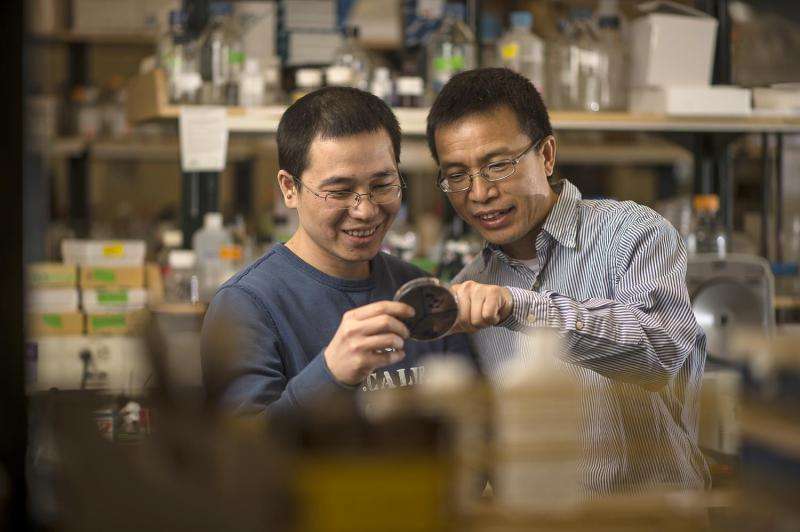A single enzyme with the power of three could offer shortcut to therapeutic target

Researchers identified a single enzyme doing the work of a trio thought necessary to control a common cellular signaling process being pursued as a therapeutic target.
The signaling process, ubiquitination, plays an essential role in numerous important cellular processes such as immunity, which is frequently hijacked by pathogens to enable the spread of infection within a host, said Zhao-Qing Luo, a Purdue University professor of biological sciences and member of the Purdue Institute for Inflammation, Immunology and Infectious Diseases, who led the research.
"This signaling process is very important, and many companies are working to develop drugs to control it and use it to treat diseases," Luo said. "This discovery is a paradigm shift because we had only known a cascade of three enzymes, named E1, E2 and E3, to initiate this process. If one enzyme could accomplish the same thing, it could potentially make the therapeutic goal easier to achieve. However, much more research needs to be done."
Luo led a team studying Legionella pneumophila, the bacterium that causes Legionnaires' disease. A paper detailing the National Institutes of Health-funded research was published in the journal Nature and is available online.
Ubiquitination is one way a cell is told what to do through management of the proteins within it. The addition of a small protein named ubiquitin can mark another protein for destruction, relocation in the cell, or it can turn the protein on or off, which can trigger or stop a cellular process, Luo said.
Disease-causing pathogens have been shown to manipulate or attack the ubiquitination process to disarm immune cells and evade the body's defense mechanisms, he said.
In all ubiquitination previously observed, the cascade of three E enzymes performed a sort of relay in which one activated a ubiquitin protein, one transferred it to the target protein and one attached it, he said.
Luo's team investigated Legionella pneumophila's use of the process to inactivate proteins within a cell's endoplasmic reticulum to benefit bacterial replication, and identified a family of proteins the bacteria used to accomplish the task. The researchers discovered that each protein within the family was able to independently accomplish ubiquitination.
"This finding was totally unexpected," said Purdue postdoctoral researcher Jiazhang Qiu, who is a member of the research team. "Not only does one molecule independently accomplish ubiquitination, it does this in an entirely different way. It really changes everything we thought we knew about this important process."
The team found another unique aspect of the ubiquitination process is the use of a molecule named nicotinamide adenine dinucleotide, or NAD, as a source of energy. The common cellular energy source Adenosine Triphosphate, or ATP, had been used in all other observed ubiquitination and was thought necessary for the process, he said.
In addition to Luo and Qiu, members of the research team include graduate student Michael J. Sheedlo; associate professor of chemistry Chittaranjan Das; collaborators Kaiwen Yu and Xiaoyun Liu of Peking University in Beijing; Ernesto S. Nakayasu of Pacific Northwest National Laboratory; and Yunhao Tan a former graduate student in Luo's group who is now at Boston Children's Hospital.
The study of bacteria, which have evolved with humans, can uncover important processes and information that apply to human health, Luo said.
"If this same alternative ubiquitination process occurs in humans, perhaps an engineered ubiquitin-editing protein could be developed to target and control processes critical to the development of many diseases, including infection," Luo said. "If that is the case, this could lead to a very precise way to target and treat disease."
More information: Jiazhang Qiu et al. Ubiquitination independent of E1 and E2 enzymes by bacterial effectors, Nature (2016). DOI: 10.1038/nature17657



















